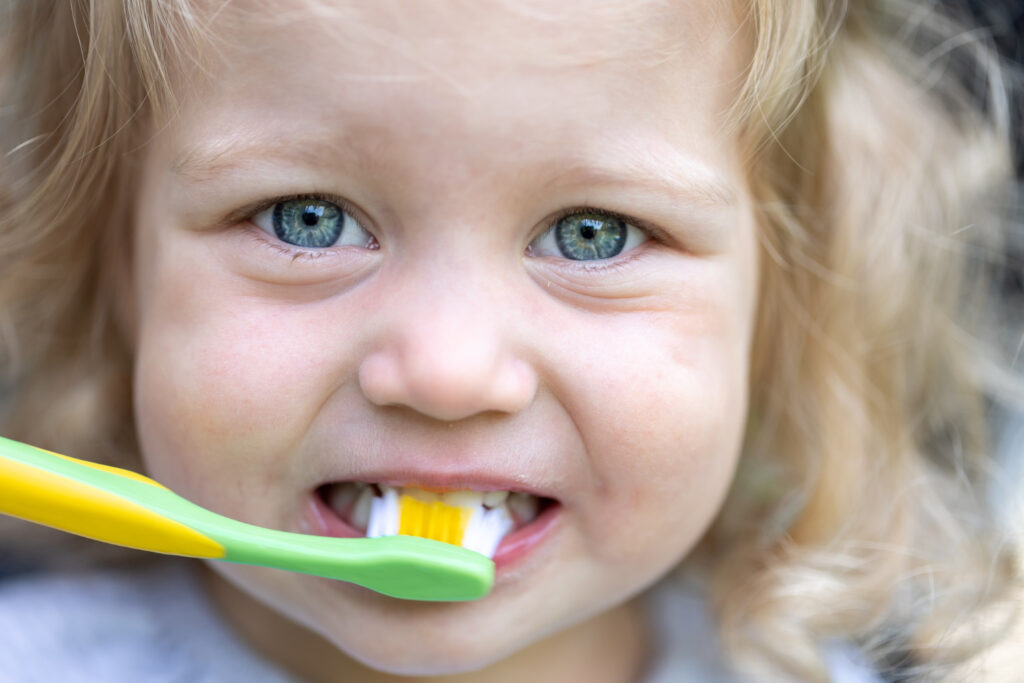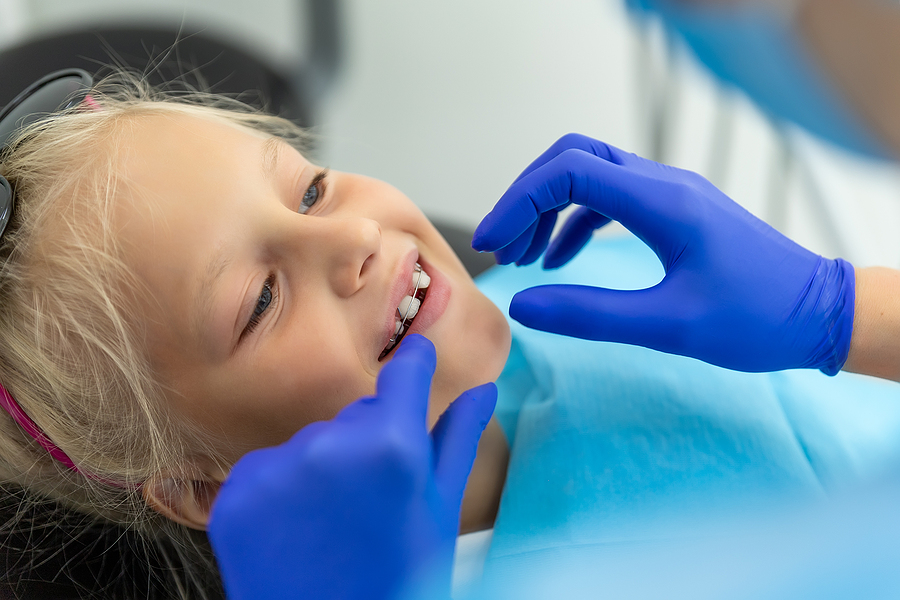In a world filled with parenting concerns, one issue that often pops up is the use of pacifiers and their potential link to the development of buck teeth. As caregivers strive to make the best choices for their little ones, understanding the nuances of this debate becomes crucial. Do pacifiers cause buck teeth?
The Pacifier Debate
The debate over pacifier use is a tale of two sides, each with its own set of arguments. On one hand, parents hail the pacifier as a savior, providing comfort and soothing benefits to a fussy baby. On the other hand, skeptics ask, “Do pacifiers cause buck teeth?”, raising concerns about their potential impact on the proper alignment of those adorable baby teeth.
Exploring the pros and cons of pacifier use in infants
- Comfort and soothing benefits: Pacifiers have long been hailed as instant soothers, offering a sense of security and comfort to infants. The rhythmic sucking action can be a source of solace during those late-night cries or stressful moments.
- Potential impact on oral development: However, the concern lies in the impact this constant sucking motion might have on the development of a child’s mouth and teeth. Does the pacifier, seemingly a source of peace, harbor an unseen threat to the alignment of those tiny teeth? Let’s unpack this concern and understand the real dynamics at play.
Recommended guidelines for pacifier use
To bring some order to the pacifier chaos, the American Academy of Pediatrics (AAP) has laid down guidelines to help parents make informed decisions. Understanding these recommendations is crucial in ensuring that the pacifier becomes a helpful tool rather than a potential dental menace.
How long is too long when it comes to pacifier use? We’ll tackel that within this blog, offering a balanced perspective on incorporating pacifiers into your child’s routine without compromising their dental health.
Understanding Buck Teeth
Buck teeth, scientifically known as malocclusion, refer to the condition where the upper front teeth protrude outward, creating an overbite. Understanding the factors contributing to this dental misalignment is crucial for discerning parents looking to make informed choices. Eventually, we can answer the question: “Do pacifiers cause buck teeth?”
Common Causes of Buck Teeth
- Genetic factors – First and foremost, genetics play a significant role in determining your child’s dental destiny. If buck teeth run in the family, there’s a higher likelihood that your little one might inherit this dental trait. Recognizing the influence of genetics helps in distinguishing between factors you can control and those beyond your command.
- Thumb-sucking habits – Beyond genetic predispositions, certain behaviors can contribute to the development of buck teeth. One notable culprit is thumb-sucking. Prolonged thumb-sucking can exert pressure on the developing teeth, gradually pushing them out of alignment. Identifying these behavioral triggers is the initial step towards proactive dental care.
- Extended pacifier use as a potential factor – While the link between pacifiers and buck teeth is often debated, some studies suggest a potential association.
Debunking Common Myths
One of the primary misconceptions we encounter is the direct correlation between pacifier use and the development of buck teeth. Is this entirely true? Do pacifiers cause buck teeth at once?
Research Studies on Pacifier Use and Dental Alignment
Numerous studies have delved into the potential impact of pacifier use on dental alignment. Many of them often emphasize the importance of considering multiple factors, such as genetics, thumb-sucking habits, and overall oral hygiene practices. They highlight that pacifier use alone may not be a sole determinant of dental alignment issues.
Furthermore, many studies acknowledge that the effects of pacifier use can vary among individuals. Not all children who use pacifiers will experience significant dental problems, and those who do may be influenced by a combination of factors.
Expert Opinions: Do pacifiers cause buck teeth?
Do pacifiers cause buck teeth? The truth is, there is no definite yes or no answer to this question. While it’s encouraged to use pacifiers for kids in moderation, expert opinions from pediatric dentists and orthodontists generally underscore the importance of a balanced approach when it comes to pacifier use and its potential impact on dental development. They suggest:
Individualized Assessment
Pediatric dentists often emphasize the need for an individualized assessment of each child. Factors like the duration, frequency, and intensity of pacifier use, combined with the child’s overall oral health and genetic predispositions, play a crucial role in determining potential effects.
Early Intervention
Many experts highlight the significance of early intervention. Identifying habits like prolonged pacifier use or thumb-sucking early on allows for timely interventions if necessary. This could involve providing guidance to parents on weaning techniques or recommending orthodontic assessments at an appropriate age.
Balanced Approach
Pediatric dentists commonly advocate for a balanced approach to oral habits. While pacifiers can offer comfort and soothing benefits, it’s essential to be mindful of their usage patterns. Limiting pacifier use as the child gets older and encouraging the development of self-soothing techniques can be part of this balanced strategy.
Consideration of Overall Oral Health
Experts often stress the need to consider the child’s overall oral health practices. Regular dental check-ups, good oral hygiene habits, and a balanced diet contribute significantly to maintaining healthy teeth and gums. Pacifier use is just one aspect of a broader oral care routine.
Avoiding Overgeneralization
Experts caution against overgeneralizing the impact of pacifiers. Each child is unique, and while some may experience dental changes due to pacifier use, many others may not. Expert opinions highlight the importance of understanding these nuances rather than applying a one-size-fits-all approach.
Maintaining Healthy Oral Habits
Proactive measures and informed choices can significantly impact your child’s dental health. This includes the right information in using pacifiers as well as the best dental care habits.
Best Practices for Pacifier Use
1. Choosing the Right Pacifier Design
Not all pacifiers are created equal. Orthodontic pacifiers, characterized by a flattened nipple shape, are commonly recommended as they mimic the natural shape of the breast during breastfeeding, potentially reducing the risk of dental misalignment.
On the other hand, cherry-shaped pacifiers have a rounder nipple and may be preferred by babies who exhibit a strong sucking reflex. Silicone and latex are the two primary materials used in pacifier construction. While silicone is durable and easy to clean, latex is softer and more flexible but may wear down faster.
Additionally, some pacifiers come with ventilation holes to reduce the risk of skin irritation, and others feature unique designs or textures to provide additional sensory stimulation. The key lies in observing your child’s comfort and preferences while considering factors like material, shape, and design to find the pacifier that suits them best.
2. Gradual Weaning Techniques
Orthodontists often recommend a step-by-step process, where the child gradually relies less on the pacifier over time. This may involve restricting pacifier use to specific times, such as bedtime or naps, and gradually reducing its presence in the child’s routine.
Additionally, introducing alternative comfort measures or providing positive reinforcement for periods without pacifier use can be part of the gradual weaning strategy.
Preventive Measures Against Buck Teeth
- Regular dental check-ups for infants – Early detection is key in addressing potential dental issues. Scheduling regular dental check-ups for infants allows professionals to monitor your child’s oral development and provide timely interventions if needed.
- Intervention strategies for thumb-sucking – If thumb-sucking becomes a prolonged habit, intervention is crucial. Practical strategies recommended by pediatric dentists to gently discourage thumb-sucking ensure a positive impact on your child’s dental alignment.
Take the First Step Towards Your Child’s Bright Smile with Floss & Gloss Kids Dentistry
Choosing the right dental care for your child is a significant decision, and at Floss & Gloss Kids Dentistry, we’re here to make it easy for you. With a focus solely on children’s dental health, we take pride in being the top Shoreline kid’s dentistry practice.
Why Trust Floss & Gloss?
- Specialized Pediatric Dentistry: Our practice is dedicated exclusively to children’s dental needs, ensuring that their unique requirements are met at every stage of development.
- Kid-Friendly Environment: Step into our Shoreline pediatric dentistry office, designed to be welcoming and fun. Bright colors, interactive toys, and our friendly team create an atmosphere where your child feels comfortable and at ease.
- Gentle and Caring Approach: We understand dental visits can be intimidating for kids. Our team takes a gentle and caring approach, making every effort to ensure your child feels safe and supported during their dental journey.
- Comprehensive Services: From routine check-ups to specialized treatments, we offer a wide range of dental services tailored to meet your child’s specific needs.
- Education for Parents and Children: We believe knowledge is key to maintaining good oral health. Our team takes the time to educate both parents and children on proper dental care techniques, nutrition tips, and preventive measures.
At Floss & Gloss Kids Dentistry, we’re dedicated to providing exceptional pediatric dental care, establishing good dental health habits in children from an early age. Each visit to our practice is designed to be a positive experience, ensuring your child feels comfortable and relaxed.
Take the first step toward a healthy, bright smile for your child – schedule an appointment today and let us be your partner in your child’s lifelong dental health journey.








